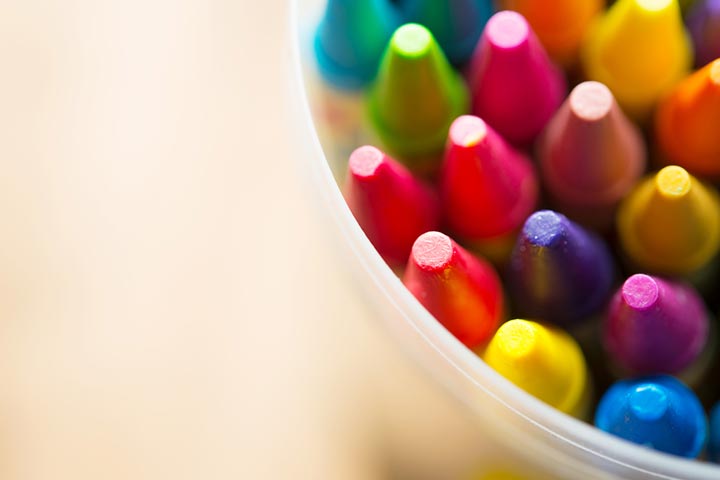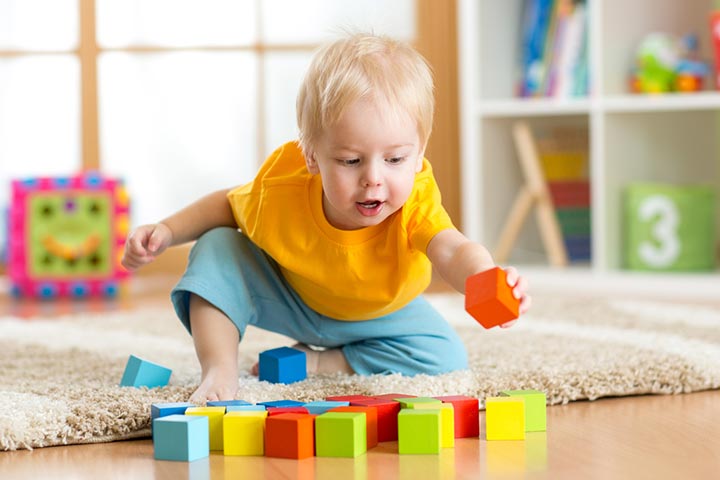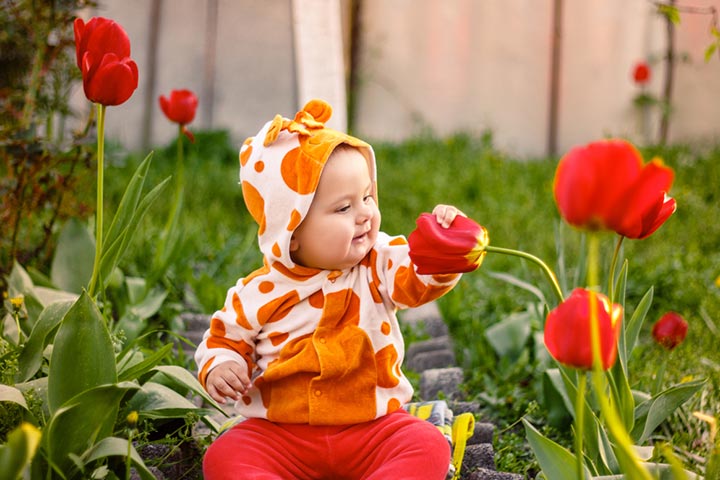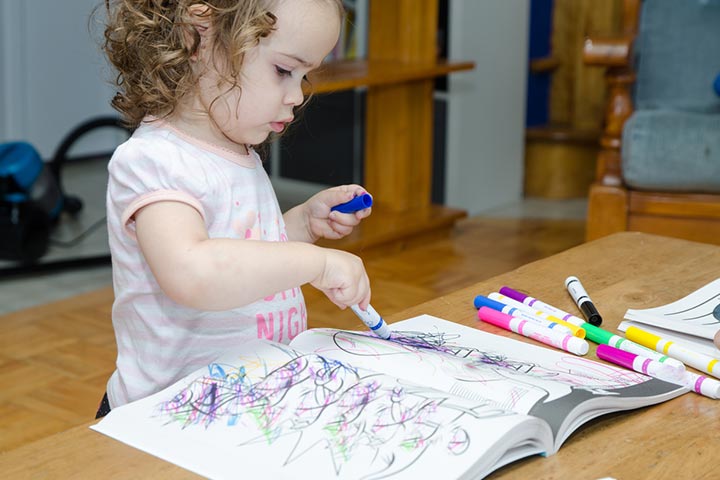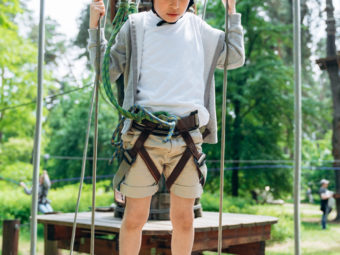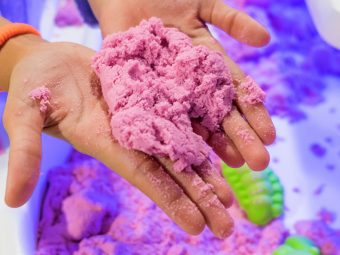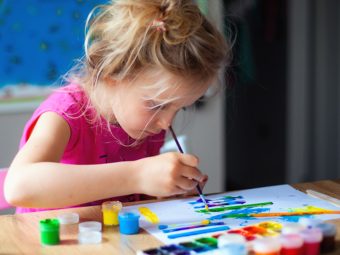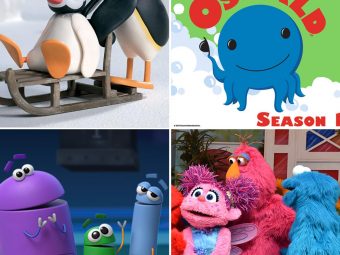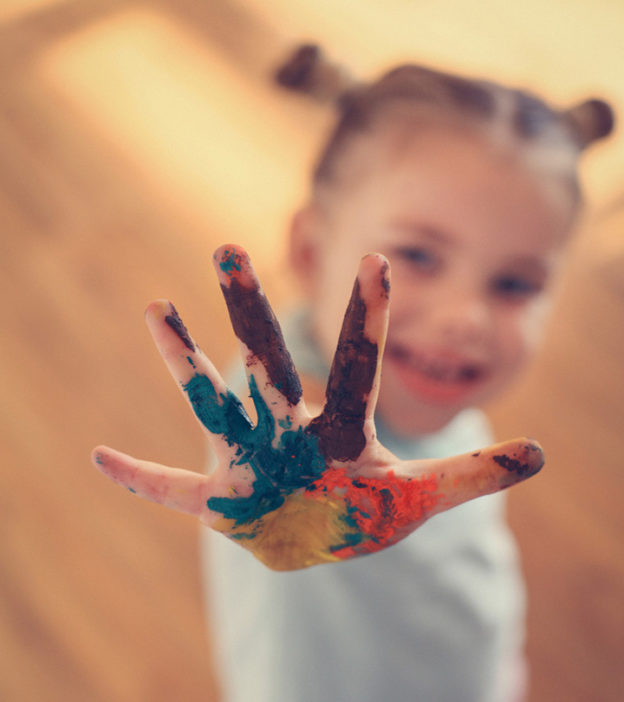
Source: iStock
Colors fascinate babies. The ability to identify colors is a milestone of their cognitive development. Most toddlers start differentiating colors by the age of 18 months. However, their ability to name different colors can develop by 36 months (1).
That said, you may start introducing colors to your children whenever you feel they are ready because the learning abilities vary from one child to another. You can teach colors by pointing out various objects in their environment— indoors or outdoors.
However, it is important to note that identifying and naming colors is a visual differentiation skill that takes time to develop.Connecting various items in the surroundings with their colors can be confusing for toddlers, and the skill only evolves with observation and practice (2) (3).
Keep reading this post to know about the benefits of learning colors for toddlers and how you can teach them.
Benefits Of Teaching Colors To Toddlers
Learning colors from a young age may have several benefits for toddlers. Some of these are:
- Learning colors helps toddlers todevelop cognitive, mental, and creative skills (4).
- Toddlers learn to make connections through colors; for example, green can be associated withraw banana, while yellow with a ripe one.
- Color recognition enhances thelanguage skillsof toddlers. As they learn to identify and name the colors, they can express themselves better.
- Knowledge of colors enhances mathematical skills that involve logic, sorting, comparing, organizing, and matching (5).
- Certain color activities may also help in relaxing and destressing toddlers with behavioral issues (6).
Image: Shutterstock
- Exploring and understanding colors can make toddlers better learners by improving their attention span(6) (7).
 Did you know?
Did you know?First Colors You Can Introduce To Toddlers
Toddlers get attracted to bright colors, so it is good to introduce colors, such as red, blue, green, and yellow (6).Most babies start differentiating between red and green colors by the time they are three or four-month-old (8).
You may decorate your children’s rooms using these colors or buy them toys and books that are bright.
Tips To Remember While Introducing Colors To Toddlers
幼儿教学的颜色可能需要时间和pa万博体育手机官方网站登录tience. However, some that you should remember before teaching colors are:
- Children have different understanding capabilities, and you should design activities based on your child’s needs.
- Introduce only one or two colors at one time and continue teaching about it until your child can easily recognize it.
- Do not rush with any activity related to color. Give toddlers adequate time to understand and explore.
- Keep exposing toddlers to colorful objects. More practice will help them retain the concept of color better.
Image: Shutterstock
- Introduce colors through everyday activities. This will help children understand the concept faster.
- Introduce contrasting colors at the beginning, such as red and yellow or green and blue. If you introduce colors of the same family, such as red and orange, toddlers might get confused.
Ways To Teach Colors To Toddlers
Teaching colors to toddlers is not always challenging. But when you introduce colors through fun activities, they can understand it better. Here are ten different ways to teach colors to your toddlers.
1. Serve a platter of colorful meal
- Involve your toddlers while cooking or preparing meals.
- Point out to them the colors of each item that you use in preparing the meal.
- Serve colorful salads on their plates, such as tomatoes, cucumbers, or carrots.
- While eating, ask children the color of each food item on their plates.
- This simple activity may help children understand colors and their food better.
 Research finds
Research finds2. Compare two identical objects of different colors
- Comparing is an important pre-math concept.
- While teaching more than one color, compare two identical objects of the different color.
- For example, if you want your toddlers to differentiate between blue and yellow colors, show them two identical balls of blue and yellow color. If you show a blue ball and a yellow fruit, children may get confused.
3. Sort objects by color
Image: IStock
- Give similar objects (pom poms or small balls) of different colors to your toddlers.
- Encourage them to sort these objects into different groups based on their colors.
- Then, have them place the sorted objects in the same color cup.
- In the beginning, your toddlers may need your help in doing this activity.
4. Match the same colors
- Most children enjoy colormatching activities.
- This can be a great activity for toddlers who are just starting to learn colors.
- You may introduce the color matching activity through stickers, colored popsicle sticks, or color matching puzzles.
- You may even play dress-up and wear a matching-colored outfit to add more fun to the activity.
5. Paint with hands
- Toddlers enjoy painting with their hands.
- Utilize this opportunity to introduce colors to them.
- Give them a piece of paper and some paint (preferably one color) and let them unleash their inner artist.
- Hand painting gives children an opportunity to feel the paint and explore the color. This activity may also help in enhancing their sensory skills.
6. Explore nature
Image: IStock
- Nature is a treasure of colors.
- Go outdoorswith your toddlers for a color hunt.
- Point out different objects and introduce their colors to your children. You may use colorful flowers, green leaves, and grass to indicate colors.
- This is an interesting way to teach colors to children as they can beautifully connect with nature.
7. Sing a song
- Children can connect through music, so it is a good idea to teach colors through songs.
- Play color songs for them.
- Have fun singing and dancing together.
- Point out the colors in these songs while singing them.
8. Recognize colors in books
- 买书大、明亮和丰富多彩。Alternatively, you could even create books of colors at home by cutting out large pictures and binding them together.
- As both of you read books together, show the colors in it.
- This is a fun idea that may help children retain the concept of colors.
9. Practice with coloring books
Image: IStock
- The simplest and the most common way in which toddlers practice colors is through coloring books.
- Coloring books come for all ages.
- Choose the one that suits your child.
- Coloring activity improves motor skills, enhances creativity, develops focus and hand-eye coordination, andrelieves stress(9).
10. Color mixing
- Once toddlers are thorough with learning primary colors, it is time to move to secondary colors.
- Color mixing is a great activity for children to understand how secondary colors are created by mixing primary colors.
- There are many color mixing activities that you can plan with them.
- One such activity is to make a color mixing jar. First, in a plastic jar, put some shaving cream and marbles. Then, ask your child to add two primary colors and shake the jar.
- Slowly, the colors in the jar start mixing, and it is fun to watch the change in colors.
Frequently Asked Questions
1. Why is it essential to teach coloring to my toddler?
Apart from being a part of cognitive development, it is crucial to teach coloring to toddlers as it can improve their emotional and intellectual well-being. It helps children relax their minds and improve their motor skills. The coloring activity also inspires creativity by allowing them to choose colors that give their picture life (10).
2. Is coloring a sensory activity?
Yes, coloring is a sensory activity that stimulates senses like touch, movement, balance, and sight.
Learning colors for toddlers help in their cognitive, language, and visual development. So if your child has reached the right age of learning colors, you can use the above activities to teach them better. These activities will help them differentiate colors, relate them to the objects, and improve their motor skills. So get started with teaching colors and let them learn at their own pace. Also, make it a fun experience and use it as an opportunity to strengthen your bond with your children.
Infographic: Points To Consider When Dealing With Children And Colors
Colors make everything bright and exciting, so toddlers are attracted to them. Being able to help distinguish one color from another is a significant milestone in their growth process. But there are certain things that you need to remember while introducing colors to your little one. Scroll down to know what they are and keep this infographic handy.

Illustration: Momjunction Design Team
Get high-quality PDF version by clicking below.
Download Infographic
Key Pointers
- Babies usually easily identify basic colors, such as green and red, by the age of four months.
- Teaching color to children depends on their learning abilities and can aid their cognitive and language development as they try to differentiate and name the colors.
- Things like matching and sorting different-colored objects or singing a song about colors can help them remember colors.
References:
- When to Teach Kids Colors?
https://www.newkidscenter.org/When-Do-Kids-Learn-Colors.html - Early Literacy With Colors.
https://www.primarilylearning.org/learning-colors-name-sort-match/ - Early Literacy Visual Discrimination.
https://www.primarilylearning.org/visual-discrimination/ - Creative Art Helps Children Develop across Many Domains.
https://childcare.extension.org/creative-art-helps-children-develop-across-many-domains/ - Help Your Child Develop Early Math Skills.
https://www.zerotothree.org/resources/299-help-your-child-develop-early-math-skills - How Colors can Benefit Children.
https://www.hunakaistudio.org/how-colors-can-benefit-children/ - The Impact of Colors on Learning.
https://newprairiepress.org/cgi/viewcontent.cgi?article=4001&context=aerc - Infant Vision Development: What Can Babies See?
https://www.healthychildren.org/English/ages-stages/baby/Pages/Babys-Vision-Development.aspx - 10 Benefits of Coloring Pages for Kids’ Psychology and Development.
https://www.colorpsychology.org/10-benefits-of-coloring-pages-for-kids-psychology-and-development/ - Benefits of Coloring.
https://www.buffalo.edu/recreation/services/virtual-rec/benefits-of-coloring.html


